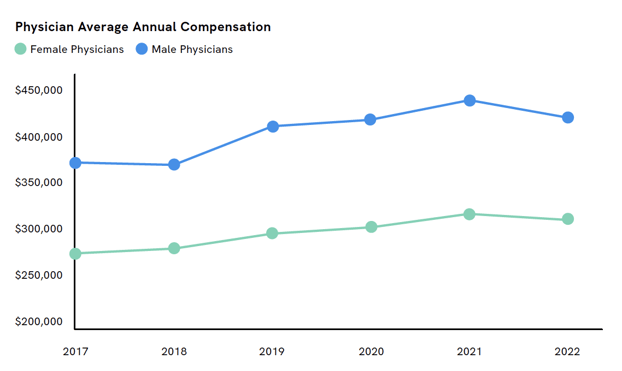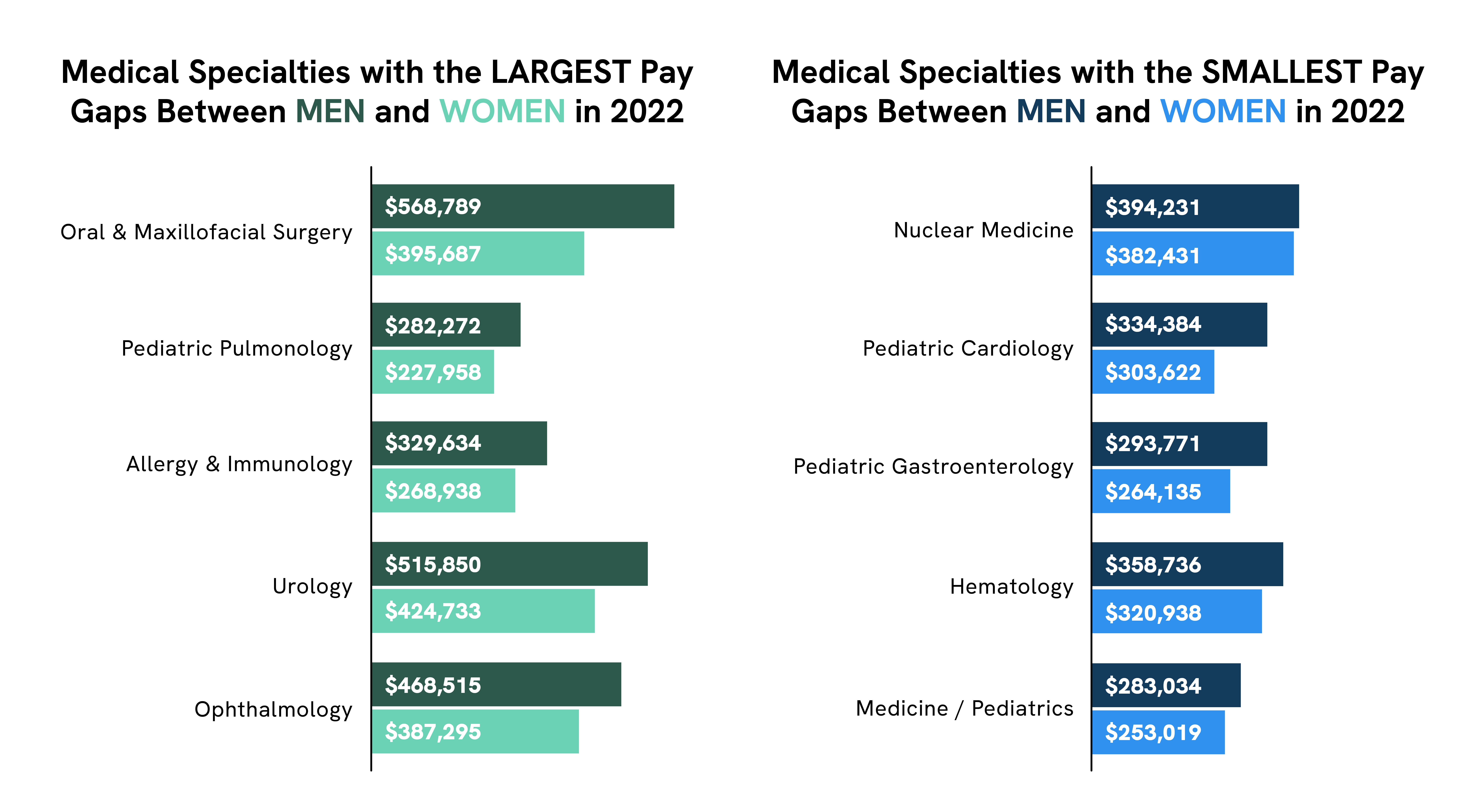Breaking the Glass Ceiling: How to Close the Physician Gender Pay Gap
By: curativetalent
Despite growing awareness of gender inequality in the workplace, disparities in compensation between men and women continue to persist, and the healthcare industry is no different. Although there is a growing number of women in the profession – there are now more women than men enrolled in U.S. medical schools, and the proportion of women physicians has risen from 28.3% in 2007 to 36.3% in 2020 – female physicians continue to earn significantly less than their male colleagues in the United States.
During the peak of the COVID-19 pandemic, the jobs and earnings of numerous female physicians were disproportionately impacted. A 2020 study published in JAMA revealed that 25% of female doctors assumed increased household and childcare duties, in contrast to just 1% of their male counterparts. As a result, many women cut back on their work hours, which consequently decreased their income and contributed to a heightened rate of burnout among female physicians

In our recent 2023 Curative Compensation Report, we analyzed data from over 190,000 full-time, board-certified physicians across the country and found that the gender pay gap across all specialties to be at a staggering 26%, with women making nearly $110,000 less than men physicians, on average. Over the course of a 40-year-career, some researchers estimate this pay gap adds up to at least $2 million.
Why is this Happening?
Lack of Transparency in Compensation
Employees exhibit higher motivation when salary information is made transparent. This leads to increased effort, enhanced productivity, and improved collaboration among coworkers. Overall, pay transparency appears to have positive effects. However, the significance of transparency goes beyond the mere financial aspect of a business. According to studies, maintaining secrecy around salaries perpetuates discrimination, making transparency crucial in addressing this issue. Data shows that women negotiate for equal salaries when standard salary information is available. The good news? There is significant momentum on this front, with eight states having enacted pay transparency laws and an additional 15 considering it.
Unconscious Bias
Unconscious bias, or mental associations outside of conscious awareness that influence one’s interactions with others, also plays a significant role in the gender pay gap. While the impact of unconscious bias on compensation is not fully clear, there are numerous instances of gender bias in the medical profession. Women doctors are frequently referred to as "Nurse" instead of "Doctor" and are introduced using their first names instead of their professional titles. Additionally, a 2016 study revealed that Medicare payments to female physicians are lower than those to male physicians, while research indicates that women are less likely to receive societal awards and invitations to speak at grand rounds.
Differences in Practice Styles
Numerous research studies indicate that female physicians tend to have longer patient visits, offer more counseling, and use less profitable billing methods compared to their male counterparts. This is often due to factors such as personal traits, cultural expectations, and patient preferences. However, in a payment system that prioritizes the quantity of visits rather than the quality of care provided, these differences may place female doctors at a disadvantage. Despite the benefits associated with longer visits, the current volume-based payment model favors male doctors and perpetuates the gender pay gap.

Addressing the Physician Gender Pay Gap
Pay Transparency and Benchmarks
Not surprisingly, knowledge is key, and pay transparency is a concrete way to make strides forward in closing the gender pay gap. Providing benchmark data during salary negotiations could be beneficial in increasing parity. Employers should be required to disclose their pay structures and how they determine compensation, allowing physicians to have a better understanding of their worth and negotiate more effectively. This transparency would ensure that women are compensated fairly and equally for their work.
Mandated Implicit Bias Training
Additionally, training physicians and employers on unconscious bias is essential to combat the gender pay gap. Raising awareness of how unconscious bias can impact compensation decisions is necessary to mitigate its effects. Evidence shows that training programs involving perspective taking, building partnerships, and emotional regulation tend to be the most effective.
Mentorship or Coaching
Whether formal or informal, mentors can make a big difference in empowering women as well—helping women feel validated and comfortable raising their hand for potential roadblocks in compensation and for leadership opportunities. The support of mentors in leadership can also encourage women to speak out with less fear of retribution when they’re feeling disenfranchised or are seeing unequal treatment within their organization.
Supporting Career Advancement for Women
New approaches are necessary to foster career advancement for women in medicine. Such initiatives might include revamping promotion guidelines, publicizing open leadership positions to men and women candidates alike, expanding women's healthcare leadership programs, and providing grants and scholarships to support women's further education. By prioritizing these initiatives, we can positively impact the advancement of women in leadership positions in healthcare.
The Path Forward
The gender pay gap can be attributed to several factors, including lack of transparency in compensation, unconscious bias, and differences in practice styles. To systematically attack the issue, adopting several solutions are necessary, including pay transparency and benchmarks, mandated implicit bias training, and mentorship. It is essential to implement these initiatives to empower women in medicine, promote equal pay, and create a more diverse and inclusive healthcare industry.
